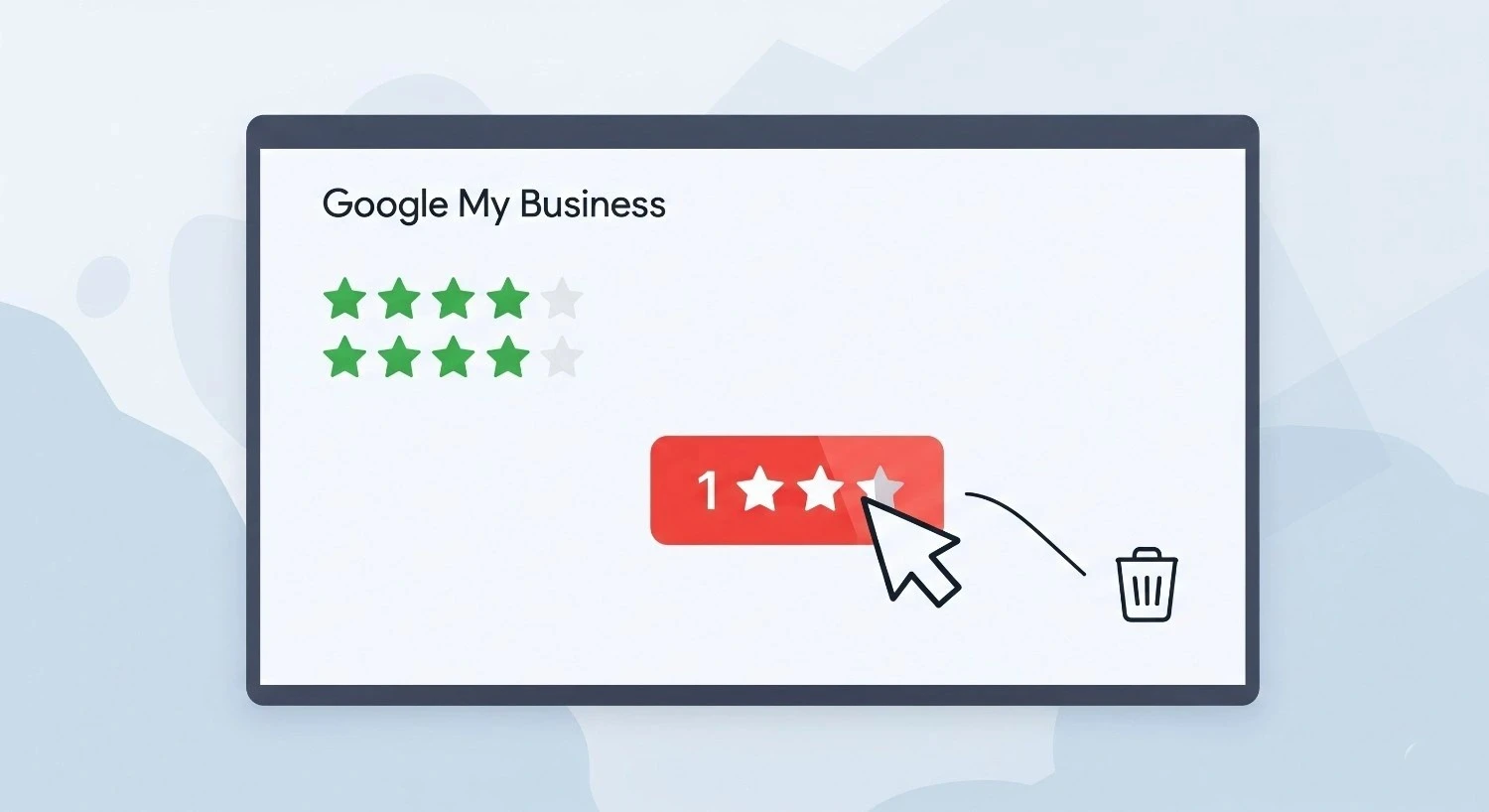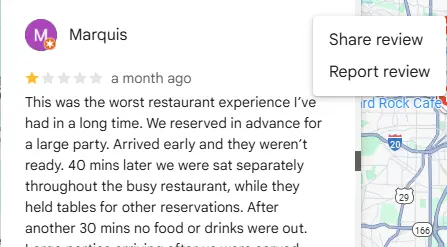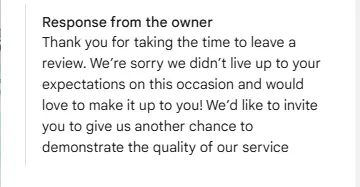
How to Remove Bad Reviews from Google My Business
Customer reviews can make or break a business. A single negative review on your Google My Business (GMB) profile can significantly impact your reputation and, consequently, your bottom line. This article explores why bad reviews matter, how they influence local SEO, and the steps you can take to manage them effectively.
Why Bad Reviews Matter for Your Business
Negative reviews can really shape how people see your business. When potential customers see a bad review, it raises doubts about your services and may lead them to choose a competitor instead. Bad reviews can erode trust and diminish your brand's credibility, leading to a cascading effect where each negative remark influences not just that individual customer's choice but potentially many others who view your online presence.
Furthermore, reviews are often one of the first points of contact between your business and potential customers. In fact, research shows that almost 9 out of 10 people check online reviews before deciding to buy. A single negative comment can steer a prospective customer away from choosing your services, emphasizing the need to manage your online reputation diligently.
Impact on Local SEO and Customer Trust
The significance of online reviews extends beyond immediate customer reactions; they also play a crucial role in local search engine optimization (SEO). Google takes into account the quantity, quality, and frequency of reviews when determining local search rankings. A plethora of bad reviews can harm your ranking, meaning fewer customers will discover your business online.
High-quality, positive reviews enhance your visibility in local searches, improve click-through rates, and boost conversions. Consequently, addressing and managing negative reviews should be viewed as a vital part of your overall marketing strategy.
Understanding Google’s Review Policy
To navigate the world of Google reviews effectively, it's essential to understand what types of reviews violate Google’s guidelines. Familiarizing yourself with these policies can help you determine whether you have valid grounds for removing certain reviews.
Examples of Reviews You Can Remove:
- Fake Reviews and Spam: Reviews that are obviously fabricated, either by individuals with no connection to your business or by competitors attempting to sabotage your reputation, fall under this category. If you identify such reviews, report them to Google for removal.
- Offensive or Inappropriate Content: Reviews containing hate speech, explicit language, or personal attacks can be flagged for violating Google's policies. If you encounter such content, it's important to take action promptly.
- Conflict of Interest / Competitor Reviews: If a competitor leaves a review intending to harm your business, you can report it. However, be prepared to provide evidence that shows their relationship to your competition.
- Irrelevant Content Not Related to Your Business: Reviews that don't pertain to your products or services, such as comments about a location that is not relevant to your operations, may be eligible for removal.
Step-by-Step Guide to Flagging a Review for Removal
Removing negative reviews begins with understanding how to effectively report them. Follow these steps to flag a review:
How to Sign In to Your Google Business Profile
Go to the Google My Business website.
Click the 'Sign in' button at the top right of the page.
Enter the email linked to your business account along with your password.
Once signed in, select the business location that you manage if you have multiple listings.
Locating and Selecting the Review
After signing in, navigate to the reviews section of your Google Business Profile. Here’s how to find it:
In the menu on the left side of your dashboard, click ‘Reviews.’
You will see all the reviews for your business listed here, along with star ratings and user comments.
Identify the review you wish to report by reading through the list. Take note of any that violate Google's policies or are particularly harmful.
Using the “Report Review” Option
Once you've found the review in question, you can initiate the removal process:
Find the review you want to report and click the three vertical dots (More Options) next to it.
From the dropdown menu, choose ‘Report Review.'

Choose the reason for your report from the available options—such as spam, offensive content, or conflict of interest—and provide any necessary details to support your claim.
Submit the report. Google will then review your request.
Tracking the Review Removal Request
After reporting the review, it’s important to monitor its status:
Unfortunately, Google does not provide real-time updates on reports, but you can periodically check back on the reviews section.
If the review is removed, you will no longer see it listed.
If it remains after several days, it means Google may not have found sufficient evidence to justify removal.
What to Do if Google Doesn’t Remove the Review
If Google decides not to remove the review, there are additional steps you can take to mitigate its impact:
Submitting an Appeal to Google Support
You can directly reach out to Google Support to challenge their decision:
Navigate to the Google My Business Help Center.
Look for contact options like live chat or email.
Clearly explain why the review should be reconsidered, including referencing Google’s review policies.
Gathering Supporting Evidence
When submitting an appeal, it's beneficial to gather any supporting evidence that strengthens your case:
Collect screenshots of the review and document any inappropriate content or violations of policy.
Provide context, such as how the review is misleading or factually incorrect.
If applicable, share information regarding past communications with the reviewer to demonstrate the legitimacy of your request.
Escalating Through Google’s Legal Removal Request
As a last resort, if the review poses significant legal concerns (such as defamation), consider using Google's legal removal request form:
Access the appropriate legal form on Google’s website.
Fill out the required fields, clearly stating your claims and the potential legal implications of the review.
Attach all supporting documents that substantiate your legal position.
Submit the form and wait for Google’s legal team to respond.
Best Practices for Responding to Negative Reviews
When you get a negative review, handle it carefully. The way you reply can shape how both new and existing customers see your business.
Keeping Your Response Professional and Calm
First and foremost, always keep your composure. Avoid reacting impulsively; instead, take a moment to breathe and collect your thoughts. A professional response demonstrates maturity and commitment to customer service. Acknowledge the reviewer’s feelings without becoming defensive. This shows other potential customers that you care about feedback, regardless of its nature.

Showing Empathy and Willingness to Resolve Issues
Empathy is crucial when addressing criticism. Express understanding towards the customer's concerns and apologize if appropriate. When you show customers that their experience matters, it can help calm the situation. Invite the reviewer to discuss their issue privately—this not only showcases your willingness to resolve the matter but also moves the conversation away from public scrutiny.
Turning Criticism into an Opportunity for Improvement
Negative reviews often highlight areas needing improvement. Use this feedback constructively to refine your services or products. Demonstrating to potential customers that you're open to growth will help build trust. Share updates or changes made in response to customer feedback to further enhance credibility.
How to Reduce the Impact of a Bad Review
While it’s nearly impossible to erase a bad review, mitigating its effects is achievable through various tactics.
Generating More Positive Reviews
One of the best ways to reduce the effect of a bad review is to build up more positive ones. When happy customers share their experiences, it helps balance out the negative feedback. You can gently encourage this by offering small perks like a discount on their next order or a chance to join a giveaway. To make things easier, share a direct link to your Google Business Profile in your thank-you emails after a purchase or service.
Encouraging Happy Customers to Share Feedback
Identify and reach out to loyal customers who have expressed satisfaction in the past. Personalized messages asking them to share their experiences can yield positive results. Ensure they understand the importance of their voice in helping others make informed decisions about your business.
Monitoring Your Review Profile Regularly
Regular monitoring of your GMB profile helps you stay on top of new reviews, allowing timely responses to both negative and positive feedback. Set alerts to notify you whenever someone leaves a review. Being proactive rather than reactive ensures that any issues can be addressed before they escalate. For businesses that want to save time, professional review management services are also available to handle responses and protect your online reputation.
Proactive Strategies to Maintain a Strong Reputation
Maintaining a good online reputation involves consistent effort beyond just managing reviews.
Review Management Tools and Alerts
Utilizing review management tools can streamline the process of monitoring your online presence. These platforms provide insights into your review activity, helping you track sentiment trends over time. Some tools even offer automatic responses to certain types of reviews, which can save valuable time.
Hire a Local SEO Expert
Partnering with a local SEO expert can significantly reduce the impact of negative reviews while boosting your online presence. An experienced professional understands how to respond to feedback, optimize your Google Business Profile, and implement strategies that highlight positive customer experiences. By having an expert manage your reputation, you ensure that your business maintains trust and credibility in the eyes of potential customers.
Regular Engagement with Customers Online
Staying engaged with your customers is one of the best ways to build a loyal community around your brand. Regularly post updates, respond to comments, and engage with your audience on social media platforms. This ongoing dialogue not only keeps customers connected but can also preempt negative reviews by creating a more transparent relationship.
Conclusion: Protecting Your Online Reputation
In the realm of online business, protecting your reputation requires a balanced approach. It’s vital to maintain transparency while managing the narrative surrounding your brand. Regular engagement with customers and a commitment to service excellence can significantly bolster your reputation.
Why Consistent Review Monitoring is Key to Long-Term Success
In short, keeping a close eye on your reviews is crucial for the long-term success of your business. Not only does it allow for immediate responses to issues, but it also offers insight into customer perceptions and market trends. By embracing feedback—both good and bad—you create opportunities for growth and demonstrate that your business is dedicated to continual improvement. This not only strengthens your reputation but ultimately leads to sustained customer loyalty and business success.





